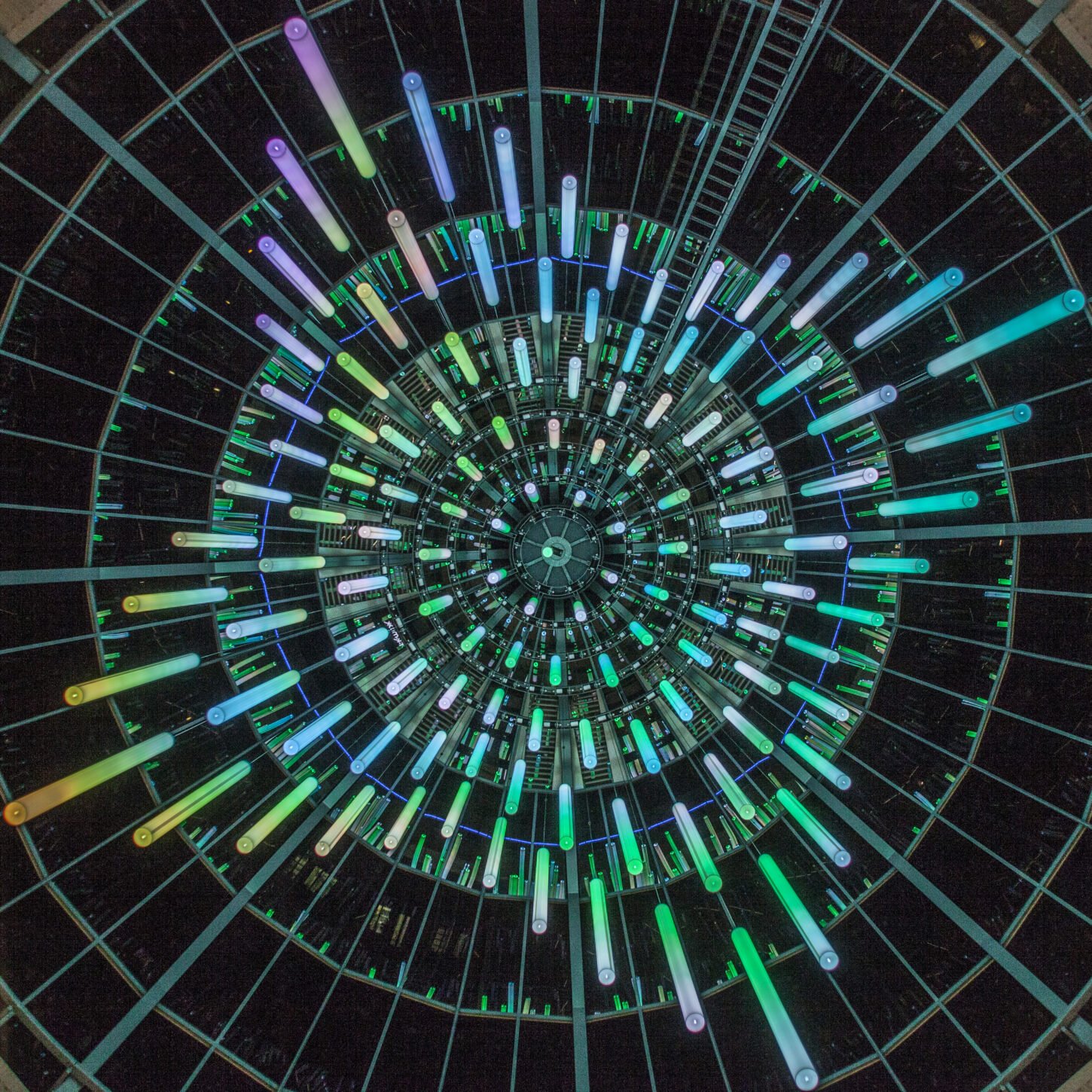The Catharina Church is the focal point of this work of art and plays the starring role in the projection. Rather than acting as a blank canvas, the church becomes completely interwoven with the interior. The neo-Gothic architecture reinforces that effect. The work of art seems to feed on itself; the projected images, for example, have been taken from the church windows. They suffered major damage during the war and were redesigned during the church restoration work that took place from 1945 to 1961.
The themes in the church windows were transferred from the interior to the exterior so that they are clearly visible to onlookers. The coloured windows act like photographic slides. They only reveal their images when bathed in light. We use the same principle to project the themes in the windows onto three of the four outside façades in a way that engraves the stained-glass images on the structure of the building. Details taken from biblical window images are presented in a collage; a graphic representation where myriad themes and details can be discovered. The result is beautiful, unexplainable and unexpected. While interacting with the classical, analogue stationary projection, the viewer has time to let the contents of the image sink in, look more closely at details in the image, creep into it as it were, and discover something new each time.

